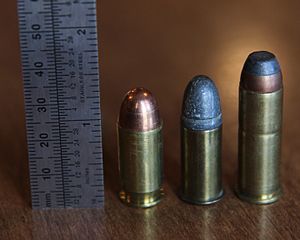
The .22 Remington Jet (5.6x33mmR) is a .22 in (5.6mm) American centerfire revolver and rifle cartridge. The round is known in the US as .22 Jet, .22 Center Fire Magnum/.22 CFM or .22 Rem Jet.

The .56-56 Spencer (14x22mmRF) was an American black powder rifle cartridge.
The .40-65 Winchester was an American rifle cartridge.
The .475 A&M Magnum is a rifle cartridge developed in the United States. At the time of its development it was considered the most powerful sporting rifle cartridge ever developed. However, as the .475 A&M Magnum was a wildcat cartridge, the .460 Weatherby Magnum continued to be the most powerful commercial sporting cartridge available.

The .22 Winchester Rimfire is an American rimfire rifle cartridge.

The .32 Long Colt is an American centerfire revolver cartridge.
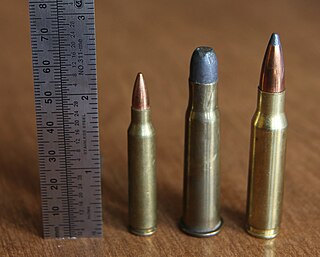
The .33 Winchester Center Fire / 8.6x54mmR is a centerfire rifle cartridge designed and produced from 1902 to 1940 by Winchester Repeating Arms Company for their Model 1886 lever-action rifle.
The .50-110 WCF / 13x61mmR in modern 1886 Winchesters with modern steel barrels is the most powerful lever-action cartridge, with up to 6,000 foot-pounds (8,100 J) of energy.

The .219 Zipper / 5.7x49mmR cartridge was created by Winchester Repeating Arms in 1937 to be used in their lever-action Model 64 rifle. It is a 30-30 Winchester cartridge necked down to a .22 caliber bullet. Marlin Firearms also offered their Marlin Model 336 rifle chambered for the cartridge.

The .44 Colt / 11.5x28mmR is an American centerfire revolver cartridge that was produced commercially from 1871 to 1940.

The .476 Enfield, also known as the .476 Eley, .476 Revolver, and occasionally .455/476, is a British centrefire black powder revolver cartridge. The Enfield name derives from the location of the Royal Small Arms Factory at Enfield Lock, the armoury where British military small arms were produced, while Eley was a British commercial brand. Used in the Enfield Mk II revolver, the Mk III variant was introduced by the British Army in 1881, supplanting the earlier .476 Enfield Mark I and II cartridges, which in turn had replaced the .450 Adams cartridges, all of which also used black powder propellant.

The .22 Winchester Automatic is a .22 in (5.6 mm) American rimfire rifle cartridge.
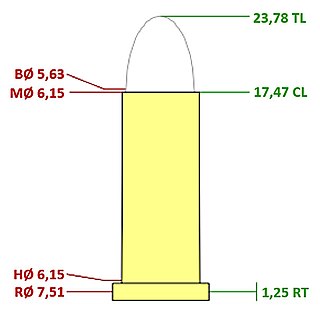
The .22 Remington Automatic / 5.7x23mmRF is a .22in (5.6mm) American rimfire rifle cartridge.

The .22 Extra Long is a .22 in (5.6 mm) American rimfire rifle and handgun cartridge.
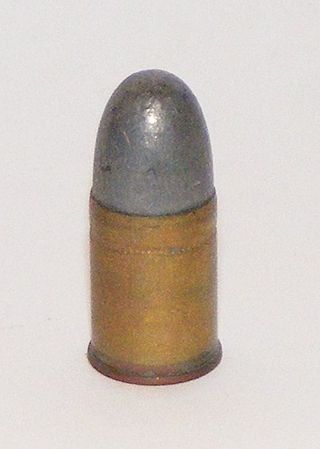
The .450 Adams was a British black powder centrefire revolver cartridge, initially used in converted Beaumont–Adams revolvers, in the late 1860s. Officially designated .450 Boxer Mk I, and also known variously as the .450 Revolver, .450 Colt, .450 Short, .450 Corto, and .450 Mark III, and in America as the .45 Webley, it was the British Army's first centrefire revolver round.
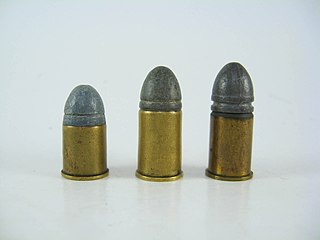
The .442 Webley is a British centrefire revolver cartridge.

The .44 Bull Dog was an American centerfire revolver cartridge produced from the 1880s until the 1930s.
The .25 Stevens Short was an American rimfire rifle cartridge, introduced in 1902.
The .25-21 Stevens was an American centerfire rifle cartridge.
The .25 Short, also known as the .25 Bacon & Bliss, is a .25 in (6.35 mm) American rimfire handgun cartridge.
